

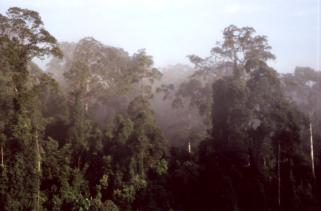
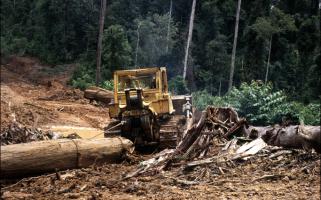
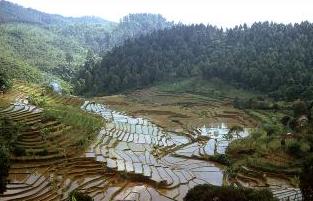
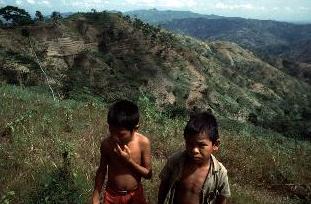
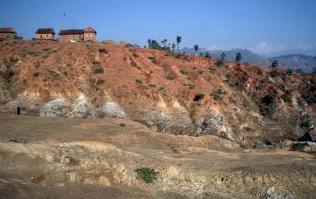
Theme leader: Prof. Sampurno Bruijnzeel
Land cover influences ecosystem energy and water budgets as well as hydrological functioning. The energy budget of a vegetated surface is affected by its reflection coefficient (albedo), aerodynamic resistance to upward vapour transport, and the canopy resistance to evaporation. Trees and forests tend to have lower albedo and resistances to evaporation, and generally deeper root systems than short vegetation (grassland and crops). Thus, soil water uptake by forests is generally higher than that by shorter vegetation. Since forests also intercept more rainfall, their overall water use is often substantially higher than that of grassland or crops. Thus, for the same precipitation, a forested area will generally yield less streamflow on an annual basis compared to pasture or cropland (with the possible exception of cloud forests). Similarly, reforestation typically reduces annual water yields.
Forest conversion affects catchment hydrological response through its effect on soil physical properties, notably surface infiltration capacity. Upon forest removal, soils are typically compacted by machinery. Further changes occur during subsequent land use due to loss of organic matter, compaction by cattle, people or equipment, and slaking and crusting of bare soil exposed to intensive rain. Forest conversion usually also involves increases in compacted surface areas such as roads, trails, settlements and urbanization. Thus, overland flow often replaces subsurface flow types as the dominant stormflow generation mechanism, producing enhanced peak flows and stormflow volumes, as well as increasing surface erosion and catchment sediment yield. Reforestation tends to reduce these adverse impacts again.
In past projects the VU University Amsterdam has studied hydrological processes in both forested and deforested landscapes for different reasons and in contrasting tropical settings.
In Puerto Rico the possible reasons for the observed very high rates of wet canopy evaporation (rainfall interception) have been explored, together with the impacts of coastal zone deforestation on upland cloud formation and rainfall generation.
In Jamaica and Central Kalimantan the climatic and edaphic factors were investigated that might be the cause of the major spatial differences in forest stature and productivity observed over short distances.
In central Amazonia the focus is on the hydrological and biogeochemical functioning of the wet valley floors.
Hillslope erosion, sediment delivery and catchment sediment yield have been quantified for different forms of land use in West Java and East Java (Indonesia).
Two ongoing global modelling studies aim to identify 'hot spots' of hydrological impacts of deforestation.